
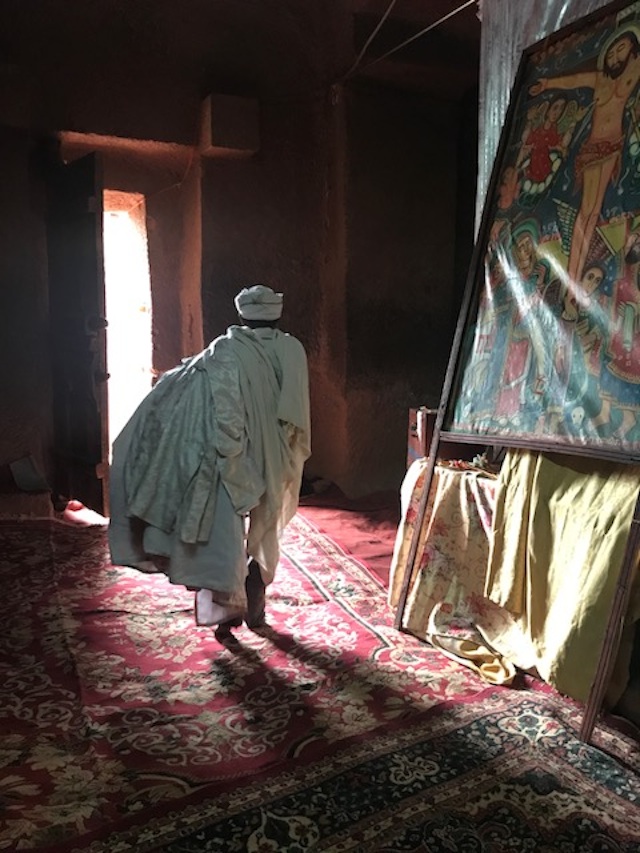
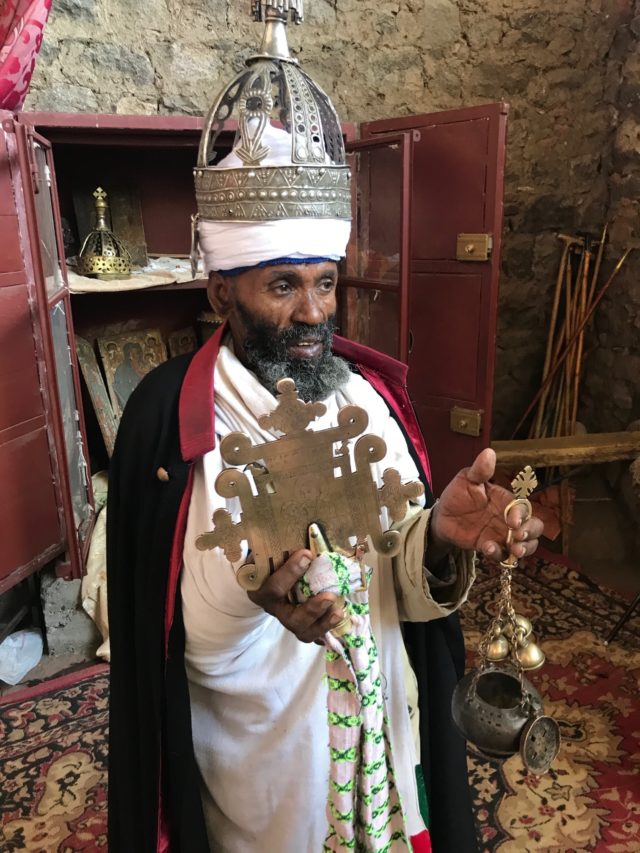
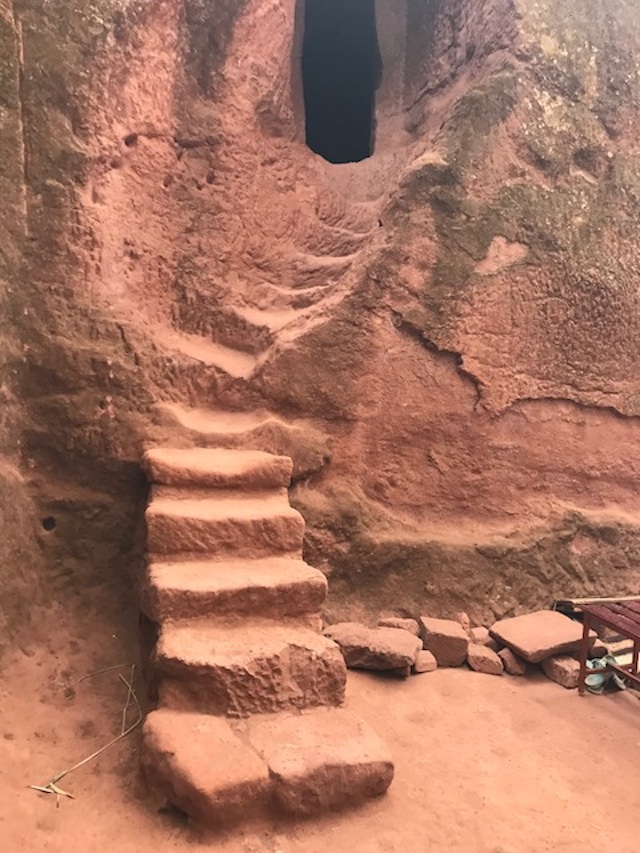
Our journey to Ethiopia was originally inspired by Stephan’s grandfather who had worked in East Africa more than a hundred years ago. While he concentrated more on Tanzania & Kenya – where today animal safaris dominate tourist agendas, we felt more interested in people, history, culture and everyday life so we chose Ethiopia. We were also curious about the only country on the continent that had not been colonized by European countries although the Italians occupied Ethiopia—brutally—for four years during WWII. We planned to be there during Orthodox Christian Easter week visiting Addis Ababa, then moving north to Gondar, for its history and Lalibela, a World Heritage Site for its famous churches carved into the rock below the surface of the earth. We only visited this middle-north mountainous region. The landscape was biblical, some of the architecture, medieval.
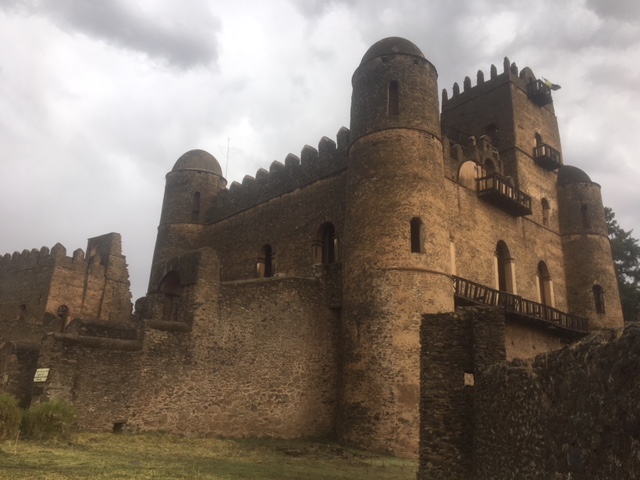
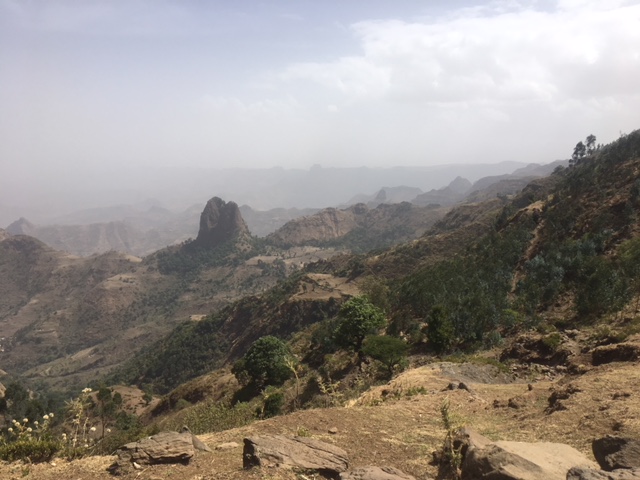
We were unprepared for the masses of passionate devotees, the evidence of Jewish & Islamic practices in their ancient Christianity, the stunning beauty of their commitment.
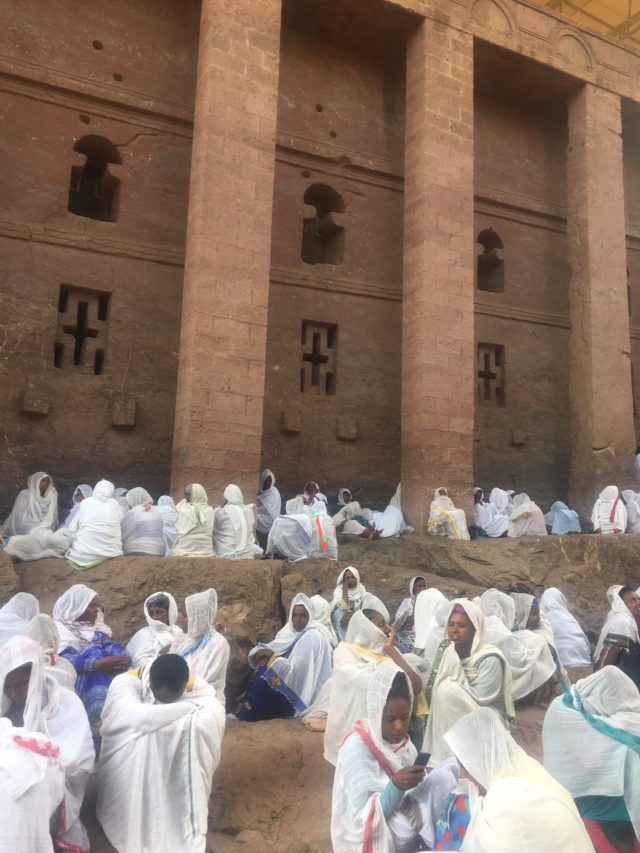

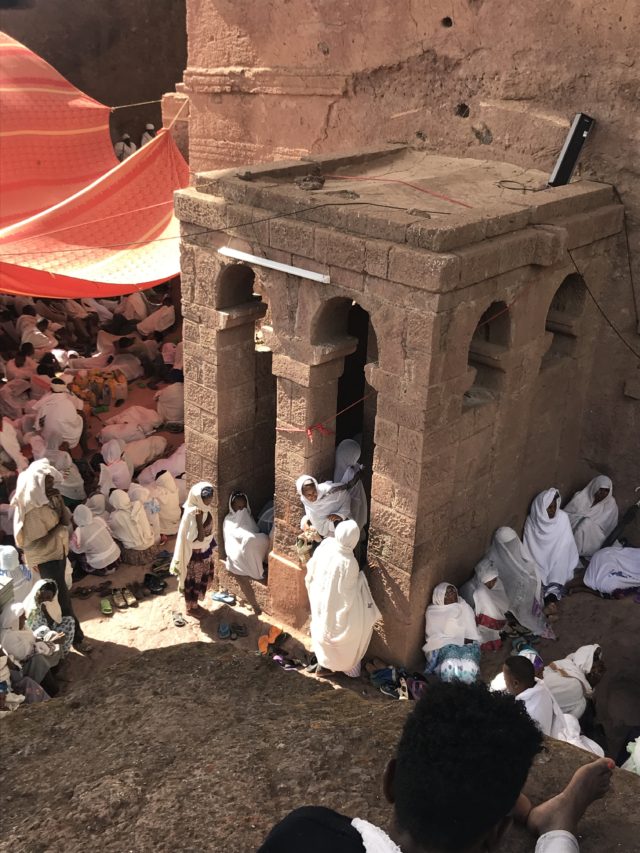
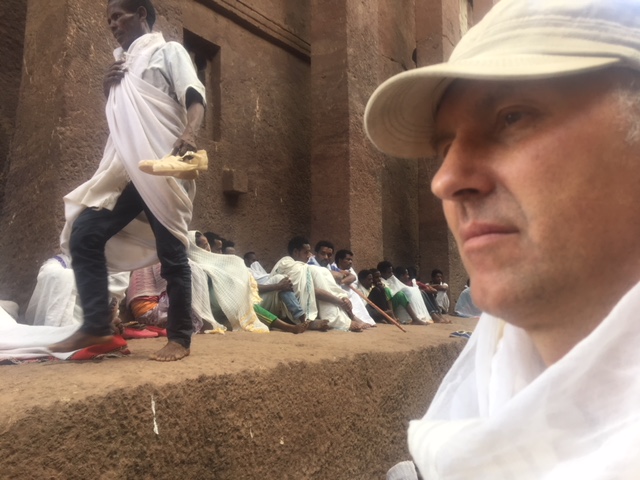
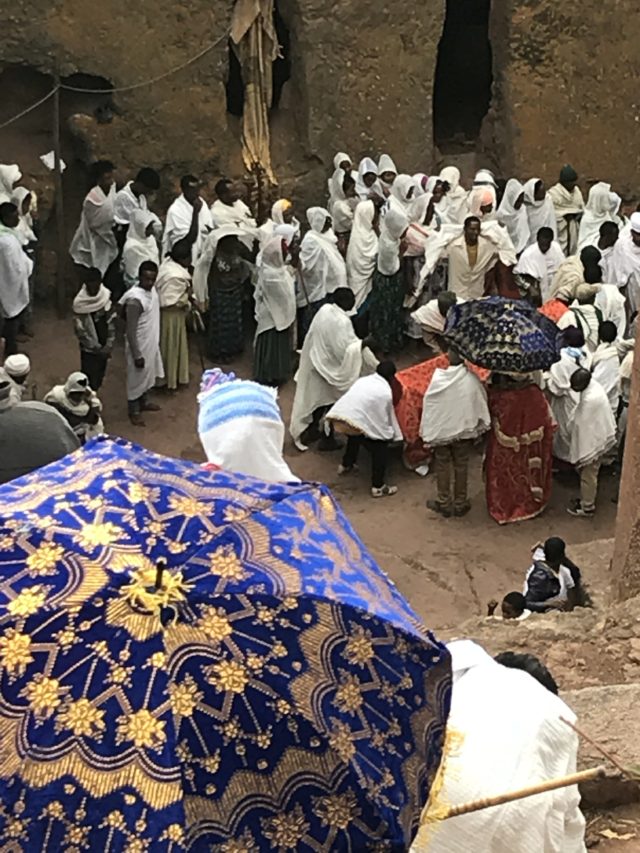
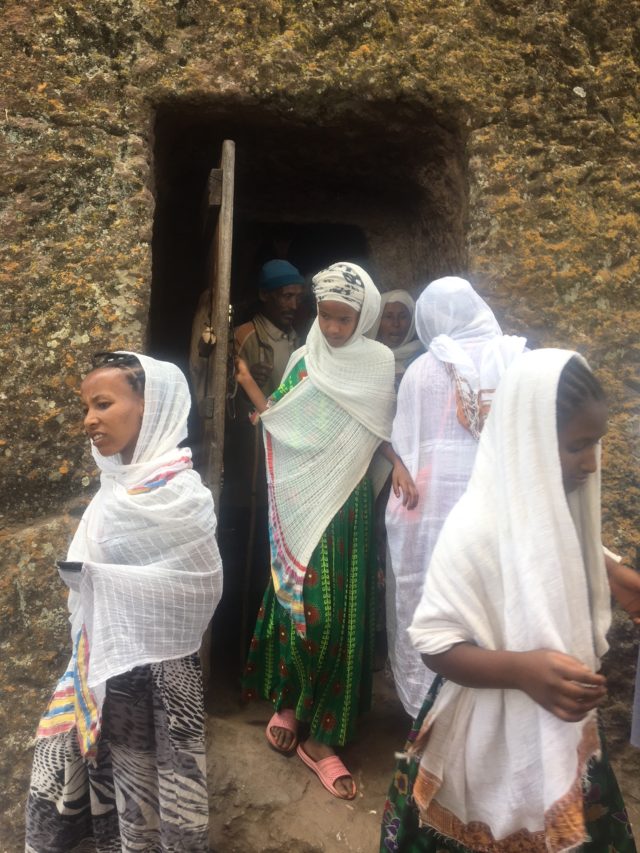
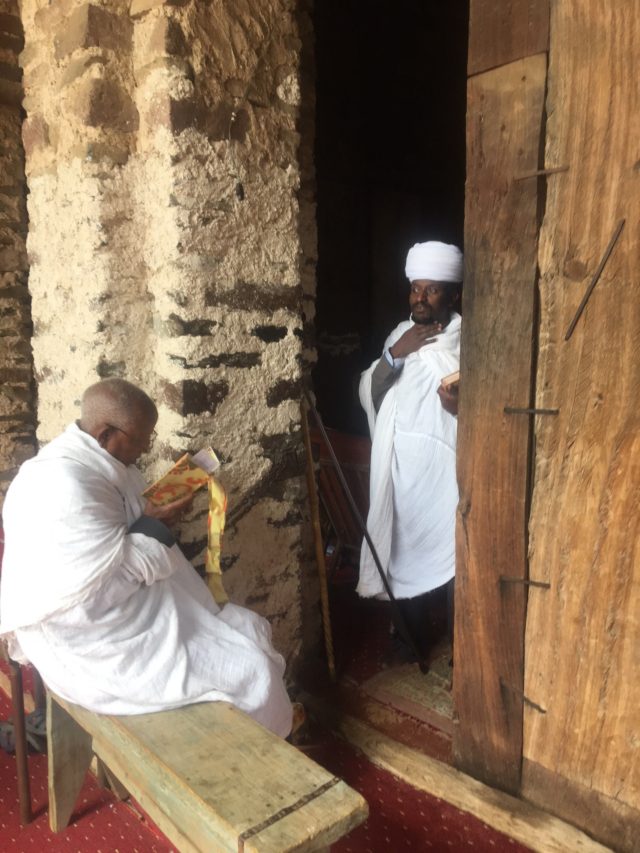
See short videos of devotees at end of blog.
Our skulls cracked from hearing all the Biblical stories woven through the history of the architecture. We had not considered Noah’s great, great grandfather and his historical relevance. Nor Enoch. Stories from the Old testament…and New. That Eden was supposedly in the Cush valley of Ethiopia. The Queen of Sheba and Solomon. The symbolic representation of the Arc of the Covenant hidden behind flowing church tapestries. Then, not only were churches carved deep into bedrock but monasteries were built into caves.
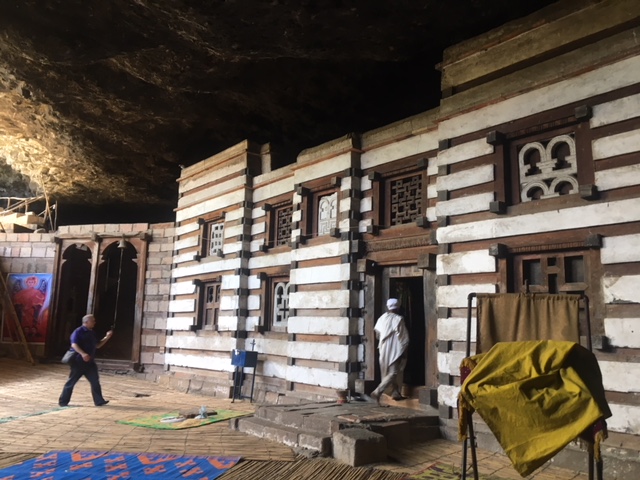
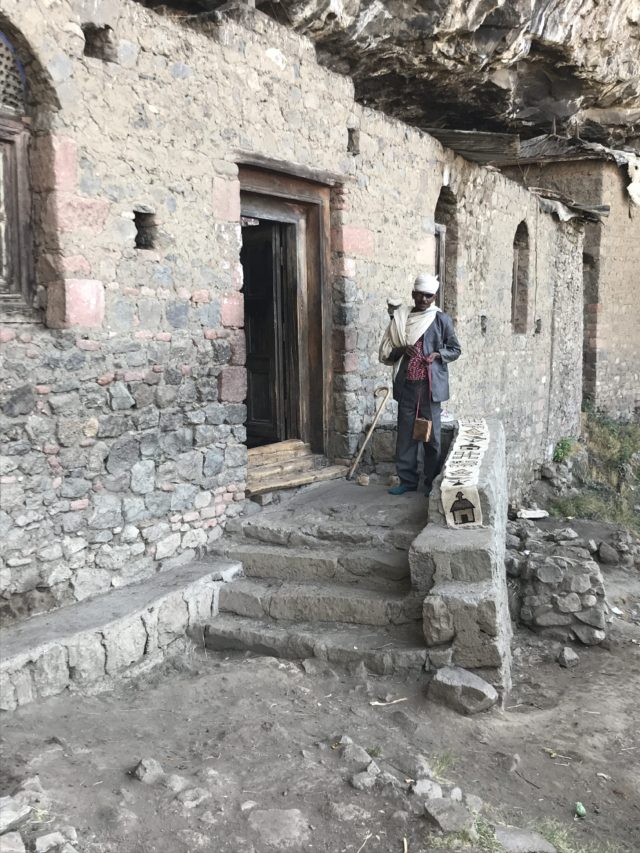
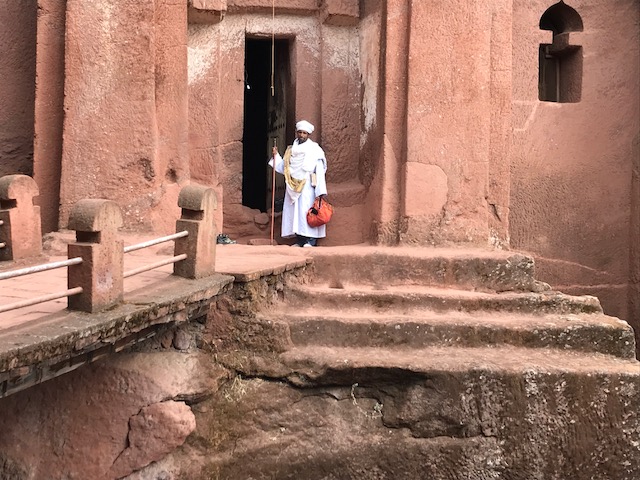
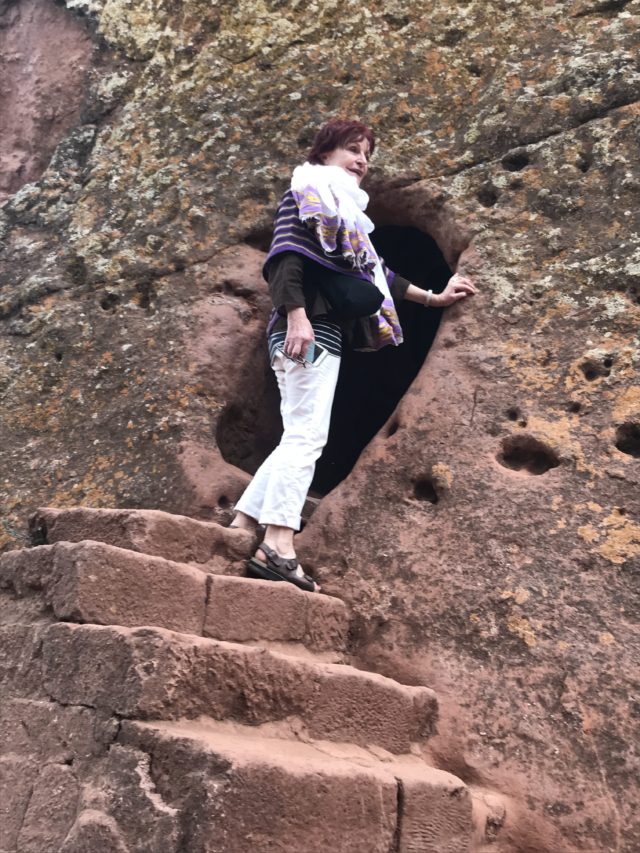
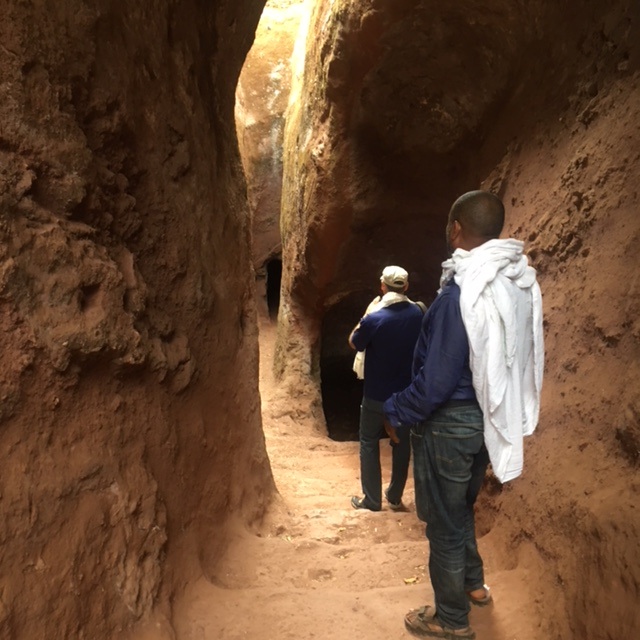
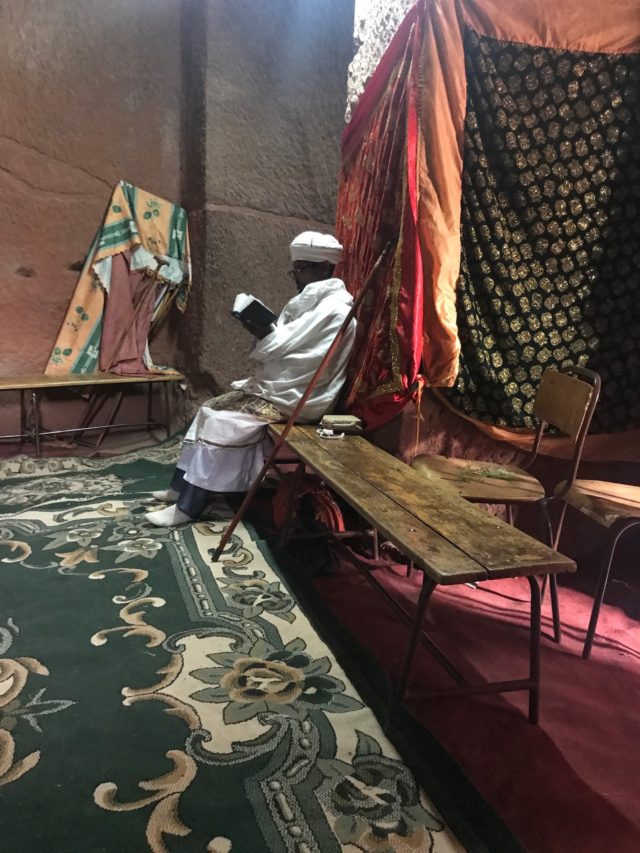
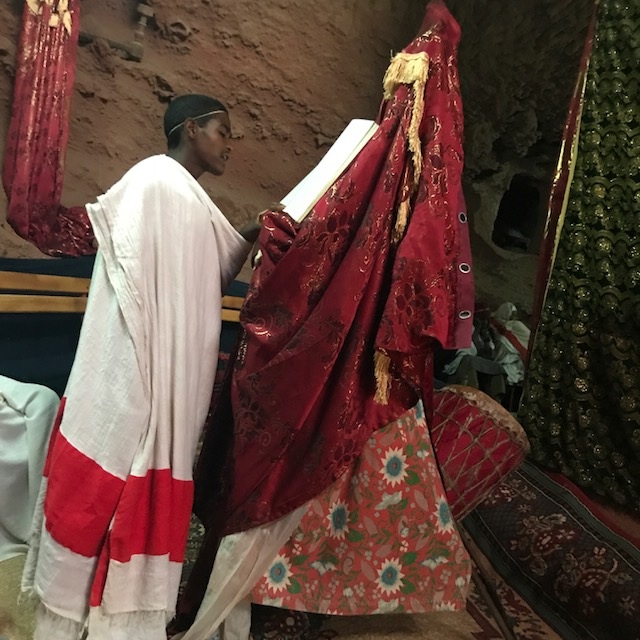
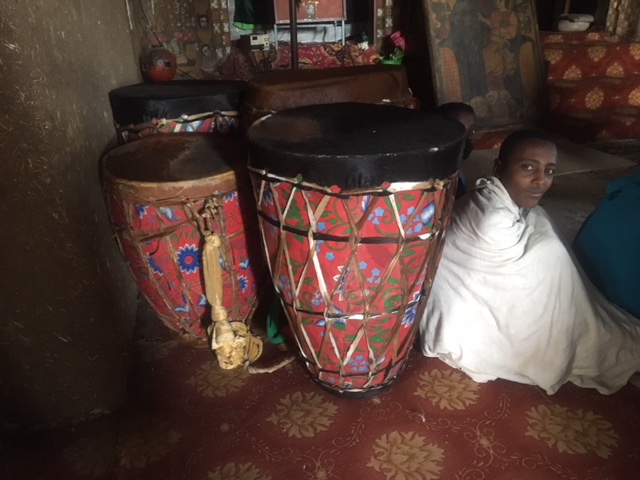
When we started planning our journey to Ethiopia the government had instigated a State of Emergency. Bloggers and journalists who had recently been released from prison for their connection to an opposition movement were once again being arrested. We blinked but wanted to go & kept track of political developments. A few weeks before leaving the PM resigned making way for a resolution to the 27 year political, economic & military dominance by one minority ethnic group. (There are more than 80 ethnic groups, 83 languages and 200 dialectics in Ethiopia!). It was a tense period as the US kept demanding more respect for human rights. But we didn’t see very many soldiers, and the ones we saw wore the most captivating blue camouflage suits. Stephan kept inquiring where he could get one. We are not supposed to photograph them! But here we are in the Lalibela airport.

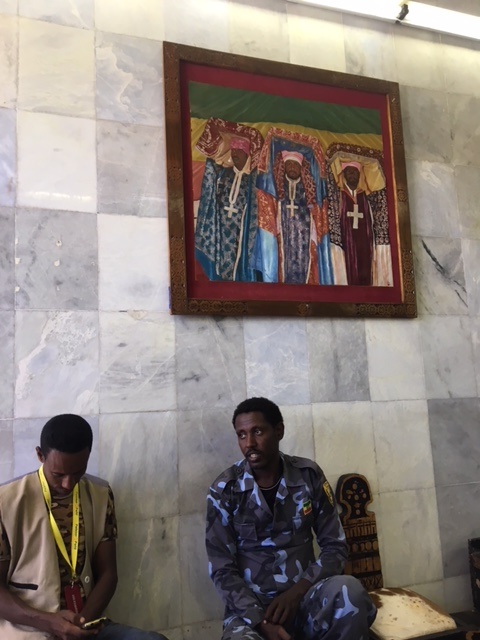
While we were there – seemingly the only Americans among the groups of Germans, Brits & Italians who felt like invading armies at historic sites – a new young leader, whose family came from two of the largest ethnic groups, was inaugurated & made a hopeful speech about unity. Our drivers & guides provided a crash course in Ethiopian political & ethnic history much richer than the books we had been reading. This new promising epoch coincided with the beginning of Orthodox Easter week. Palm Sunday at the famous Entoto Church in the hills above Addis Ababa.

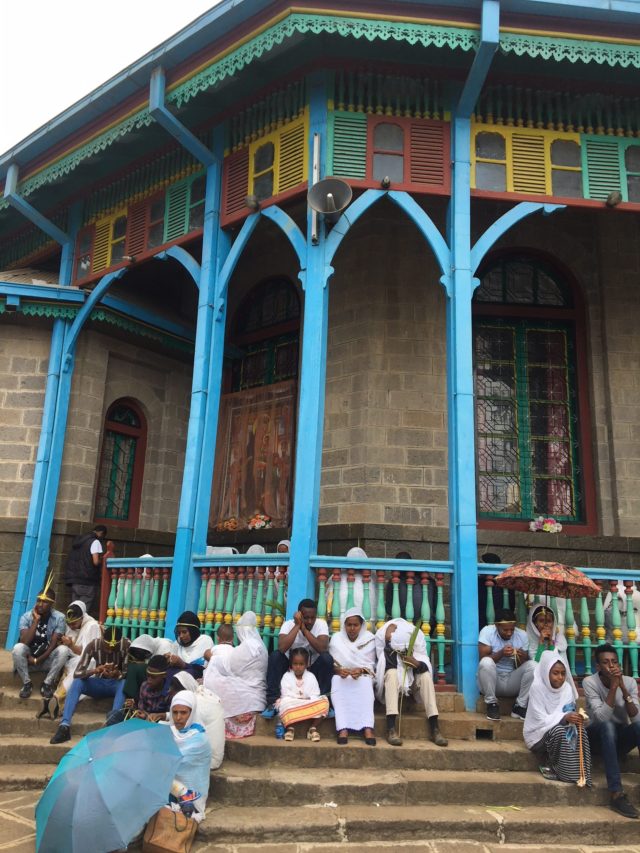
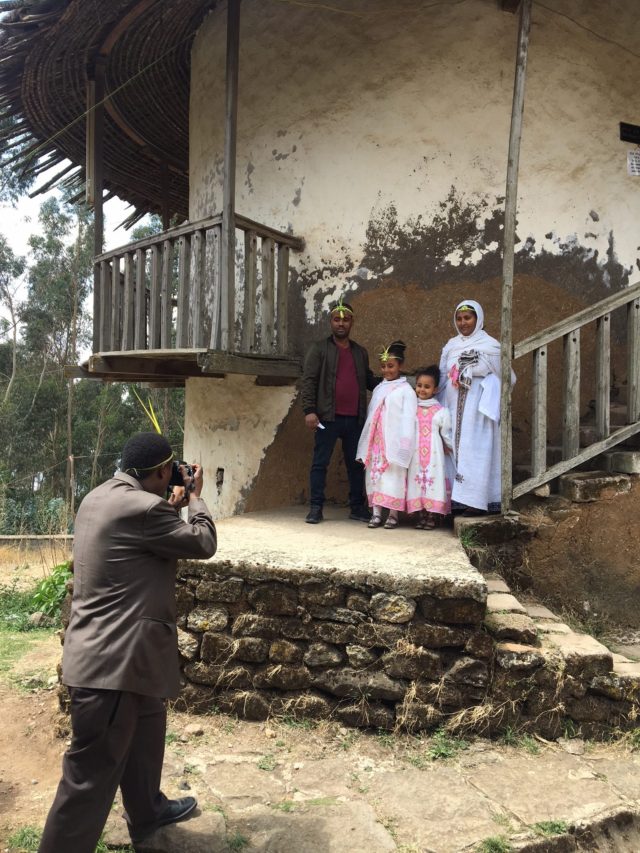
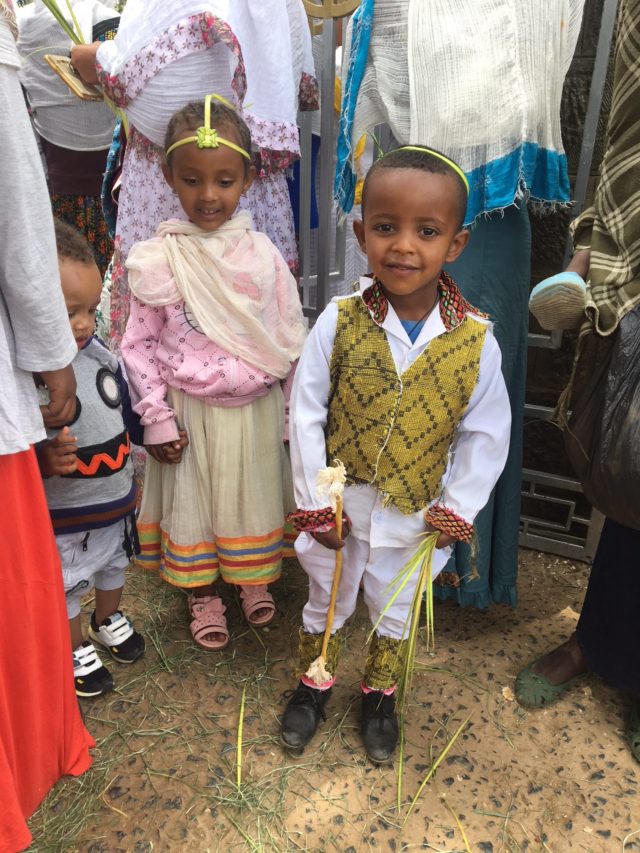
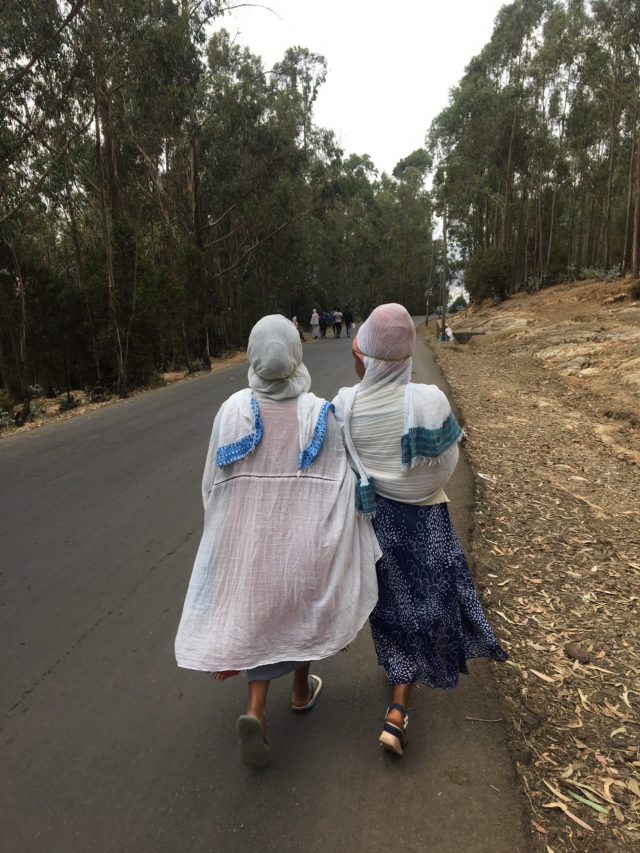
Since Ethiopia’s ancient Christian religion is bound up with nationalism we appreciated this education in what it means to be Ethiopian. We were also grateful for an Easter Sunday traditional lunch invitation at the modest house of our Lalibela guide, Daniel. It included goat that had been slaughtered that morning, enjera (the spongy bread used to scoop up all dishes, Doro Wot (chicken and egg cooked in a delicious spicey sauce) and Tej, honey wine.
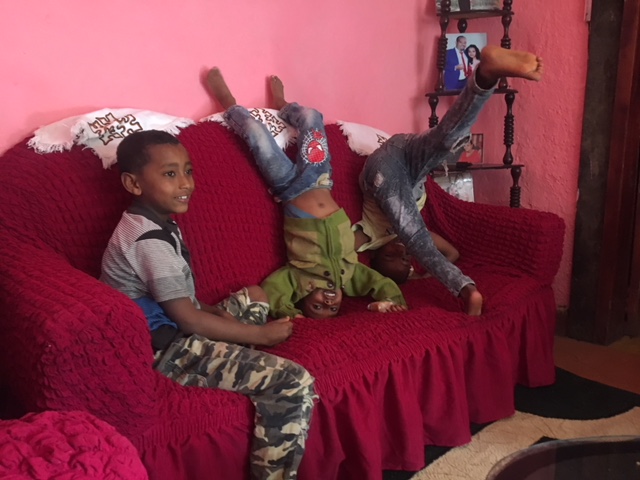
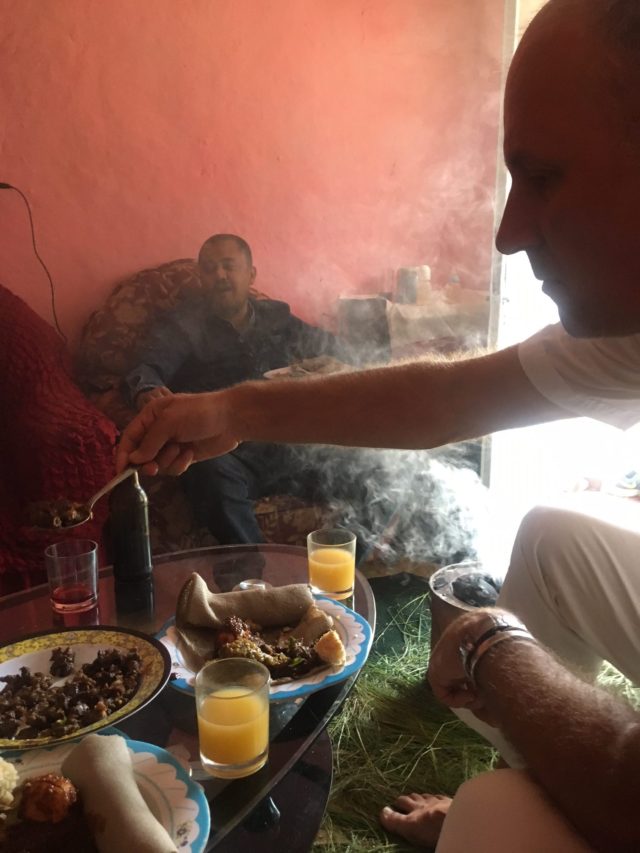
Lunch also included a traditional coffee ceremony with its elephant grass spread on the floor and clouds of frankincense. The best coffee in the world, of course. How will we ever get used to drinking coffee without the aroma and clouds of frankincense?
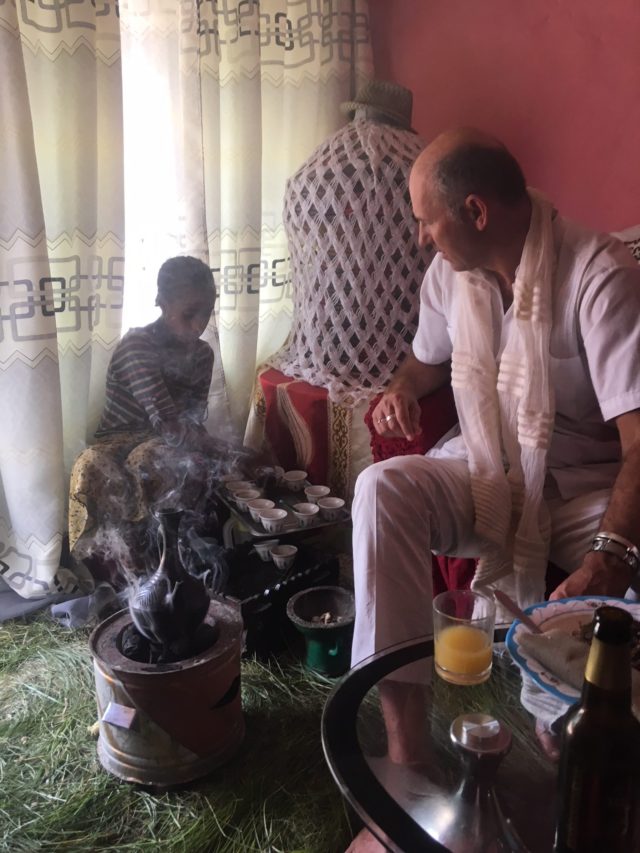
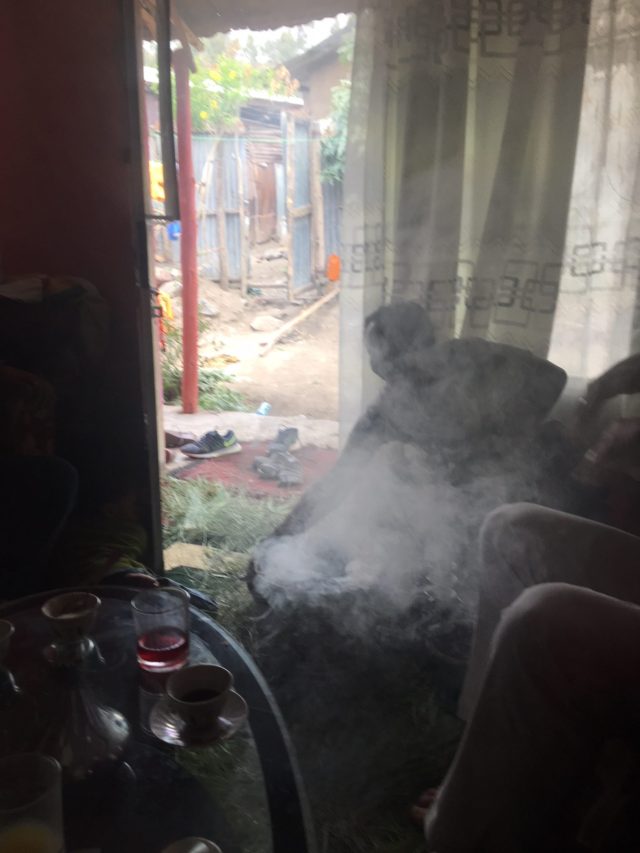
When we travel we often look for keys that might open doors, permitting slivers of light, with the hopes they will illuminate the “other” culture. In Ethiopia, the search for keys —or doors—was tricky. All our assumptions about Christianity, Judaism, and Islam in the region were off kilter. But as soon as we drove into the countryside it became apparent. This is a country of subsistence farmers & goat herders. In fact more than 80% of the people—80 million—are involved in agriculture. Clearly life is arduous & people are struggling. It was also the end of the long dry season. We admired the graceful terraces bordered by low rock walls that helped with water conservation. The landscape gave new meaning to the expression, “farming the rocks,” that homesteaders used in northern Saskatchewan where I was born.
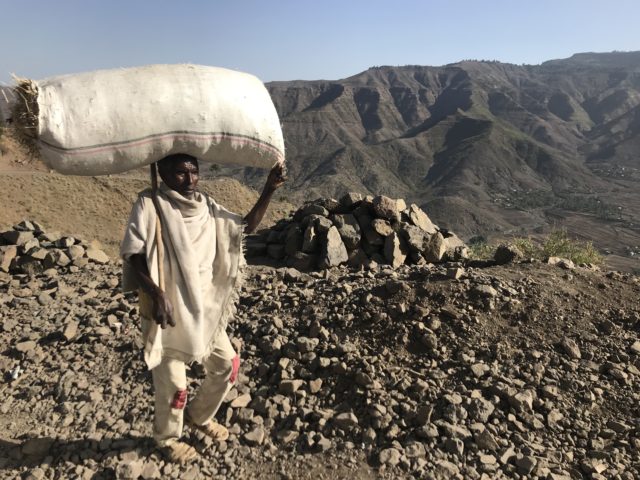
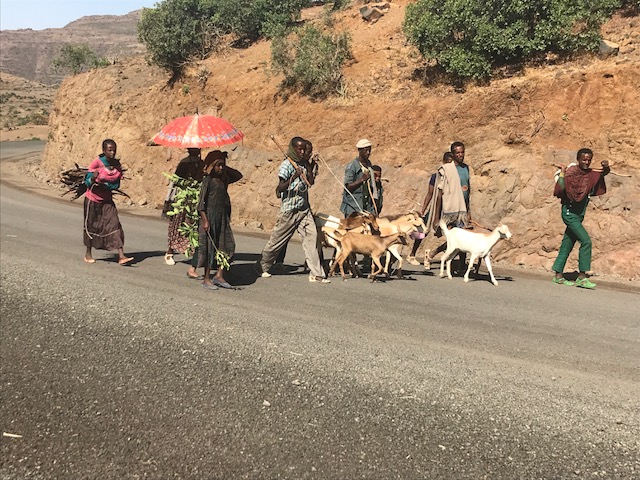
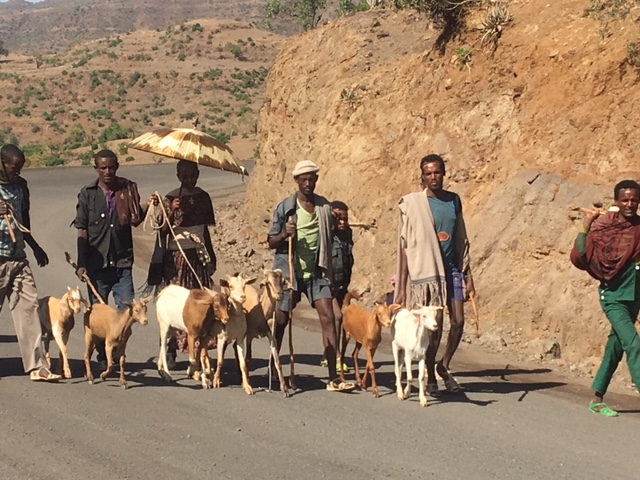
We also learned that the majority Orthodox Christians fast more than 150 days a year!! Every Wednesday & Friday as well as 55 days during Lent. They break the daily fast with strict vegetarian dishes. During Lent NO animal products are allowed for 55 days! If you want meat you must buy a whole animal and slaughter it yourself. Only hotel operators are allowed to buy chickens, beef, goats & eggs. The Ethiopian Christians do not eat pork—a dietary law they share with Jews, Muslims and Hindus. At first we admired the fasting & simple vegetarianism as the source of the Ethiopian’s gaunt physical beauty compared to the bloated bodies & faces of tourists. Then we began to understand the theology of fasting as convenient for a country of poor subsistence farmers. A key.
The day before Easter Sunday all the herders and farmers were on the roads taking their animals and produce to markets because Easter Sunday the slaughter would begin.
Chicken market in Gondar:
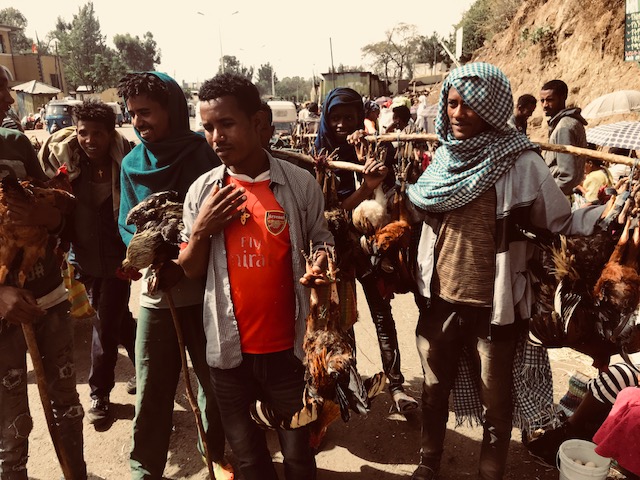
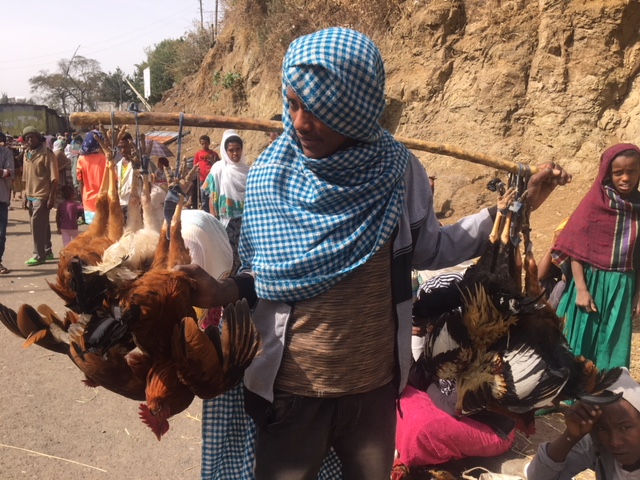

The goat & cattle market in Bilbila, 40 kilometers from Lalibela:

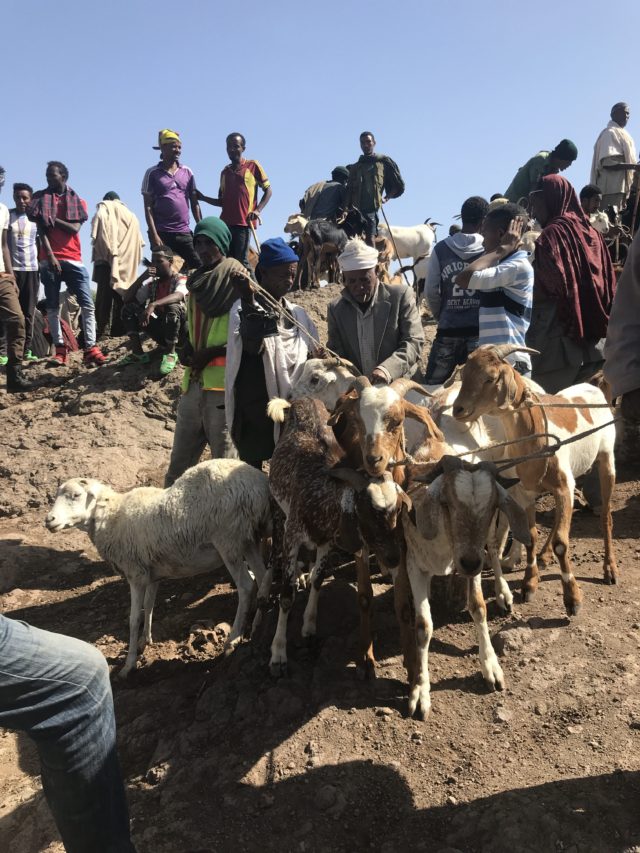
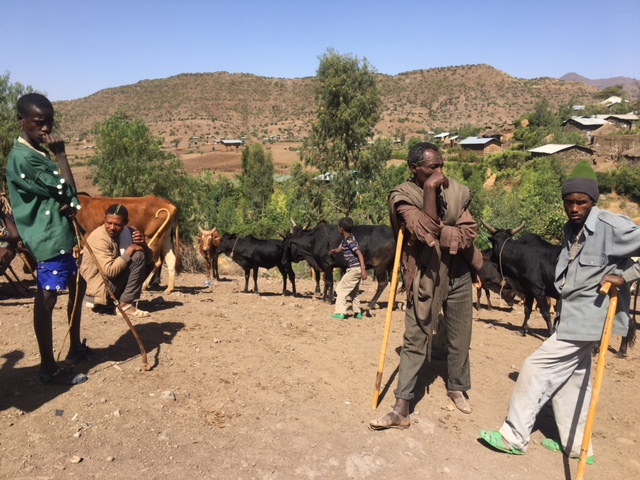
We noticed how many children were also taking loads to the markets. A group of young girls and boys were carrying big bundles of a common bush used for animal feed.
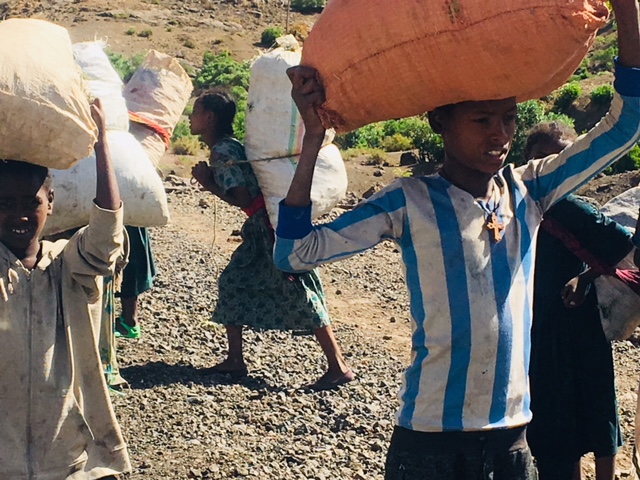

I wanted to find out how much these loads weighed. The girls hadn’t seen something this funny for days…well, maybe hours.
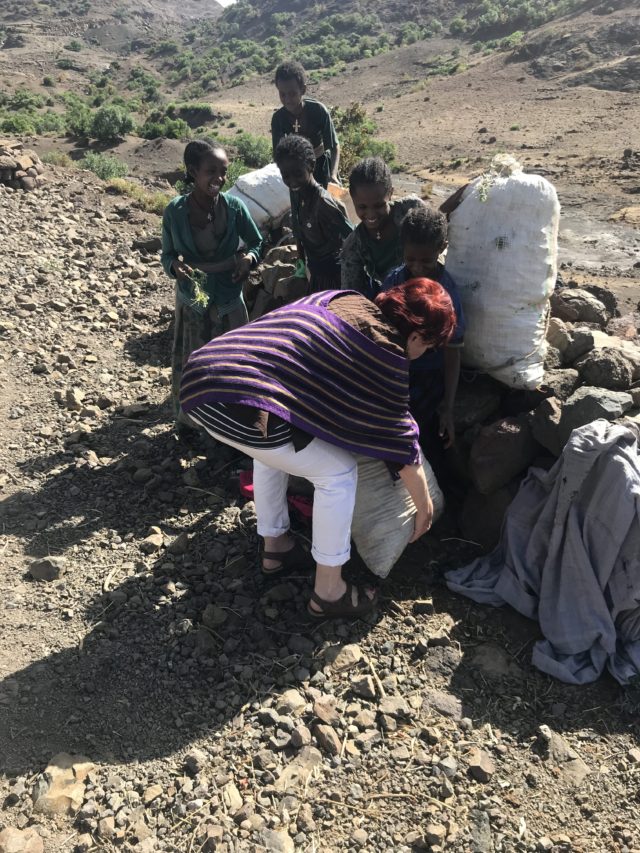
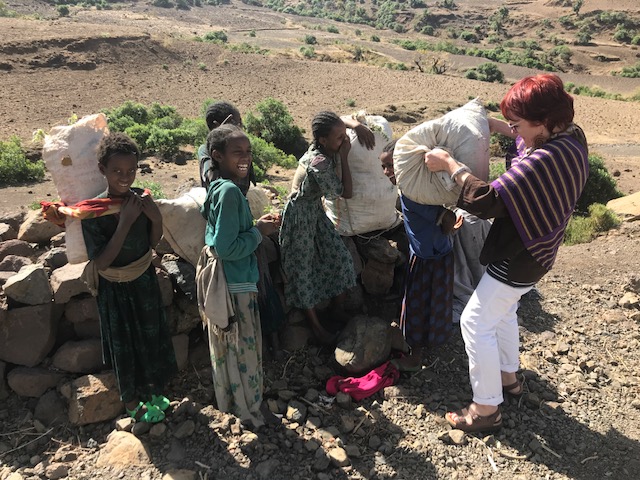

We began to feel sorry for the young local kids serving us fat, animal gorging tourists in the restaurant of our hotel, while their clothes were hanging off of them. It was the end of the Easter fasting. Theoretically they hadn’t eaten much for 55 days. Then Easter Sunday it all changed. Happy faces! I’ll save the raw beef stories for another time.
Some local Lalibela girls sporting the latest hairstyle on Easter Sunday. It’s called Sharbir:
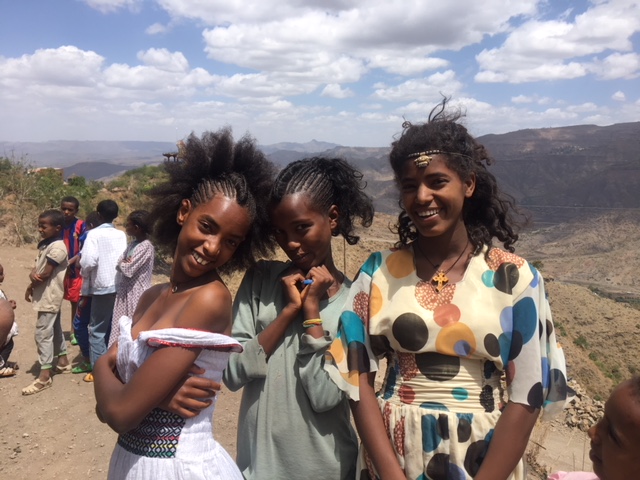
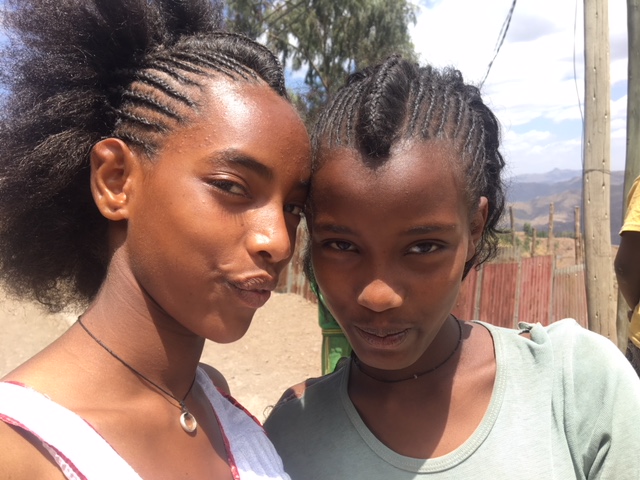
They created these styles themselves while Ada in Addis Ababa had her version done in a salon:
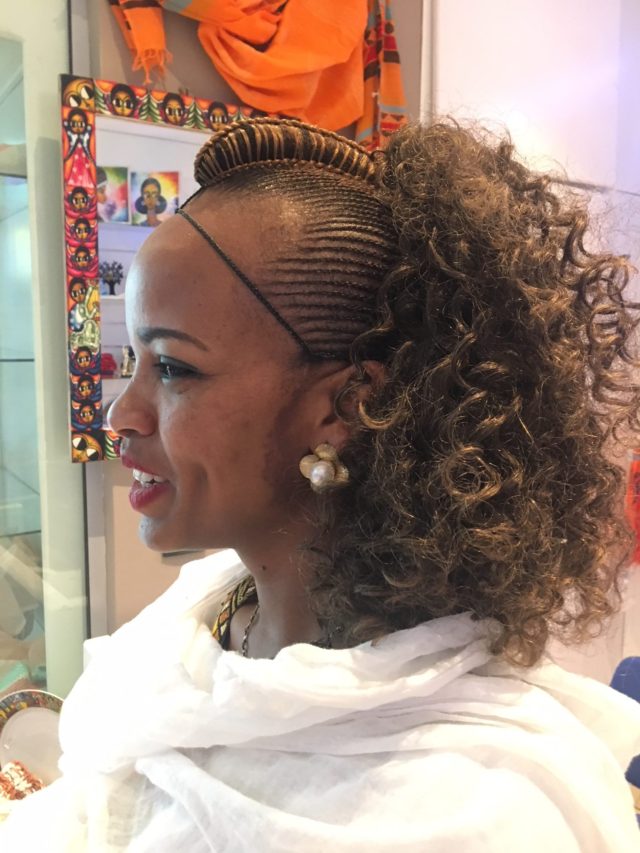
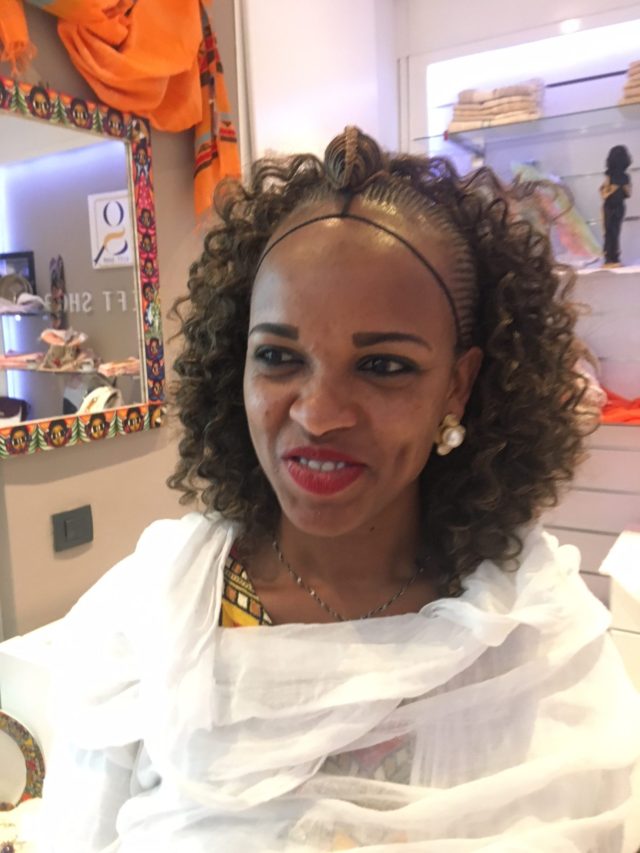
Travel is a great privilege. While it can waste precious resources & feel invasive, it also offers opportunities for observation, personal encounters & enlightenment. While traveling rural roads in Northern Ethiopia near Gondar, I noticed a brightly painted farm house.
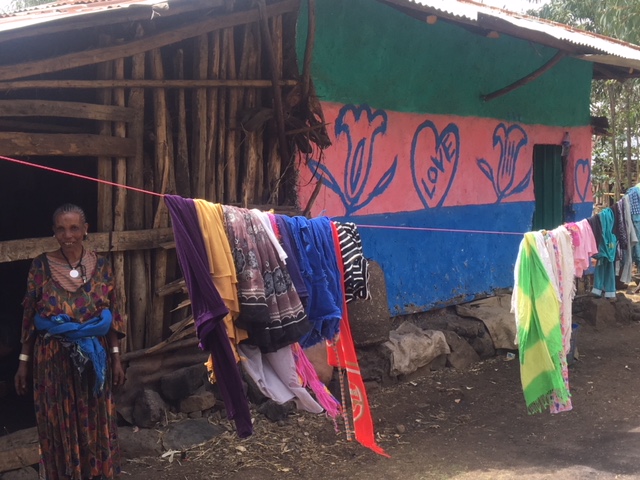
Our skillful guide helped us gain permission to photograph the exterior from Ms. Azmena, the senior woman of the household. She had the common forehead cross tattoo and tattooing around the eyes.
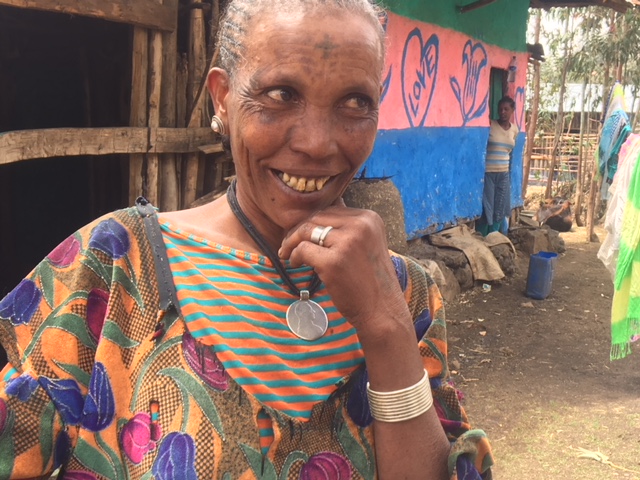
Ms. Azmena graciously invited us inside where the walls were also brightly painted. We had been observing rural farm house construction – heavy use of adobe like material: muddy clay mixed with straw & mule dung like so many Mexican houses including ours in Oaxaca.
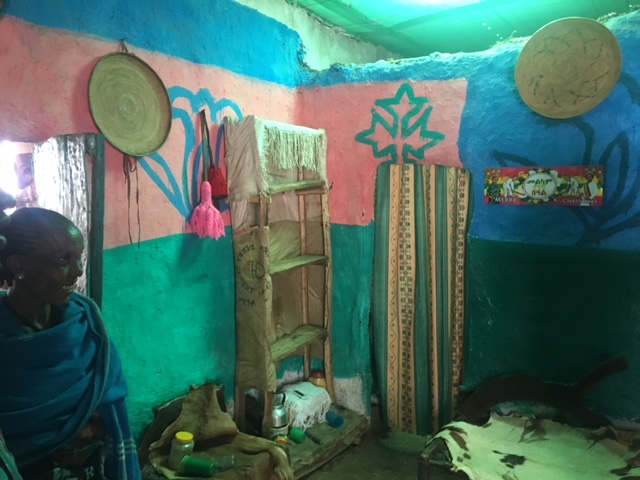
This house had 3 rooms. Small bedroom for Mum & Dad. Large storage room for kitchen implements & storage baskets, main room with wooden carved seat/cots covered in goat skins & attached eucalyptus pole structure for cooking & animal sleeping. What a privilege to see this architecture! & aesthetic!!
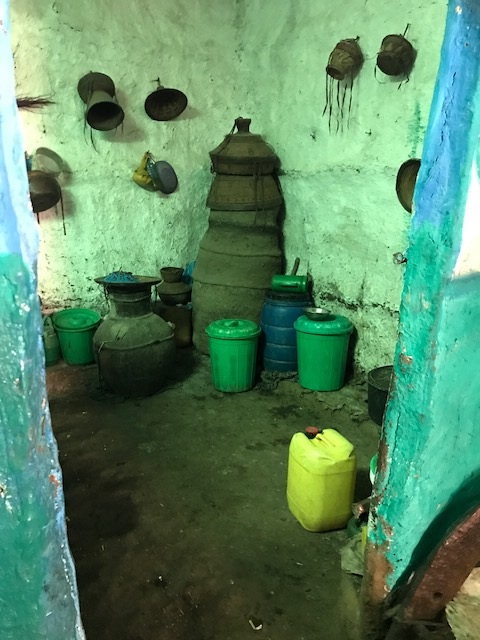
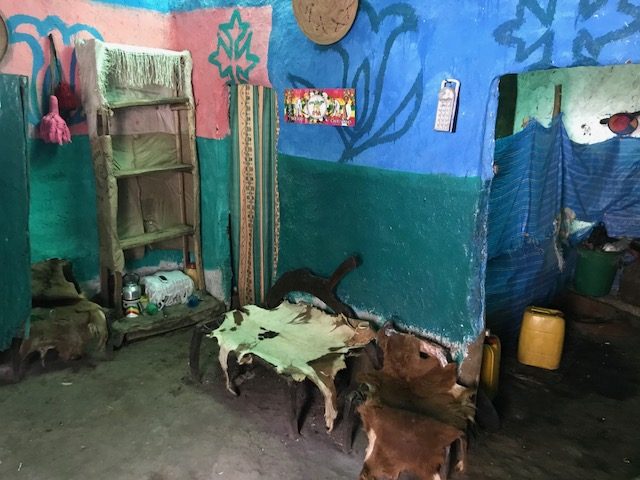
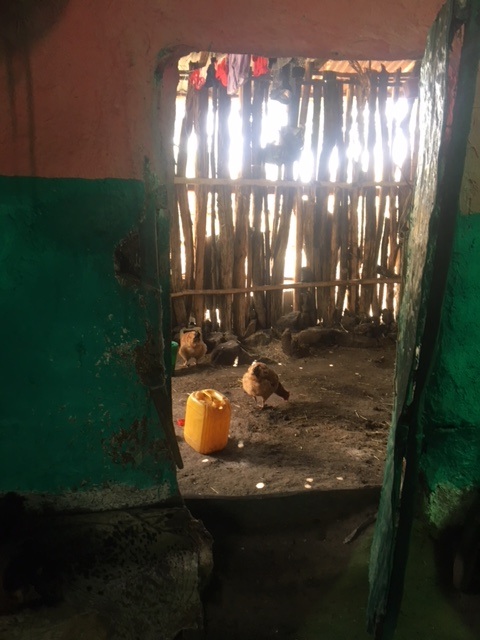
We also noticed the forehead cross on women in towns as well.
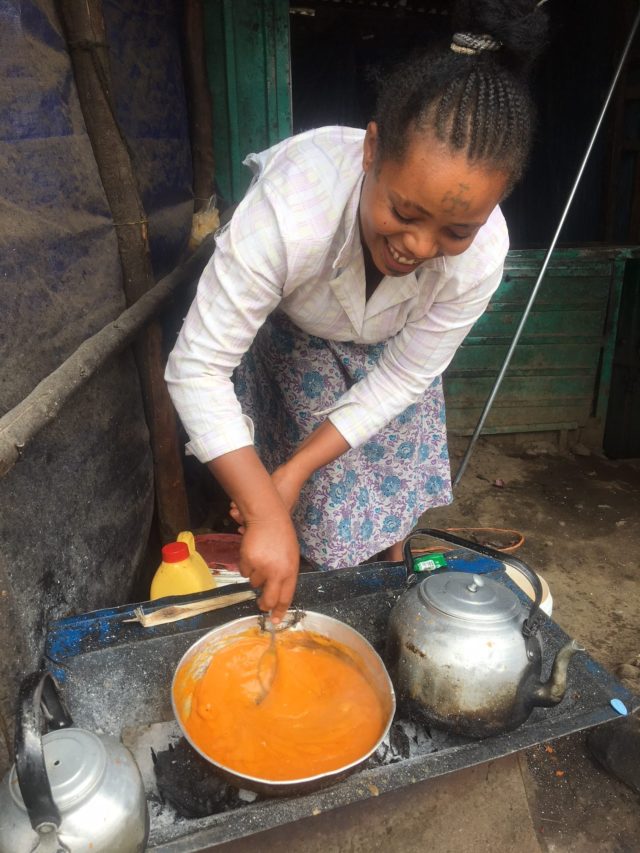
The crosses are major iconography in the Ethiopian Christian service. They differ in design by region: Axum, Lalibela, Gondar
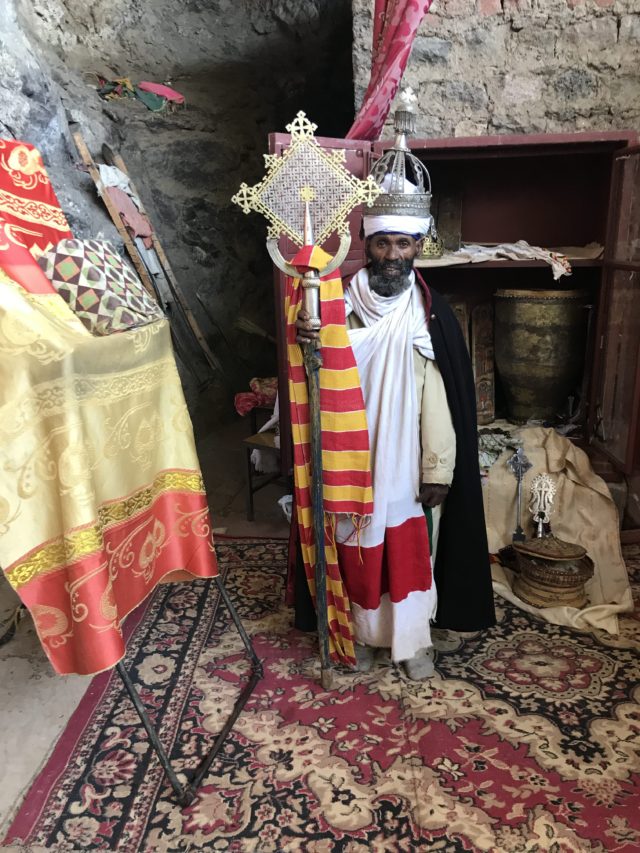

Even the famous Gyorgis church carved from rock in the ground is shaped like a cross
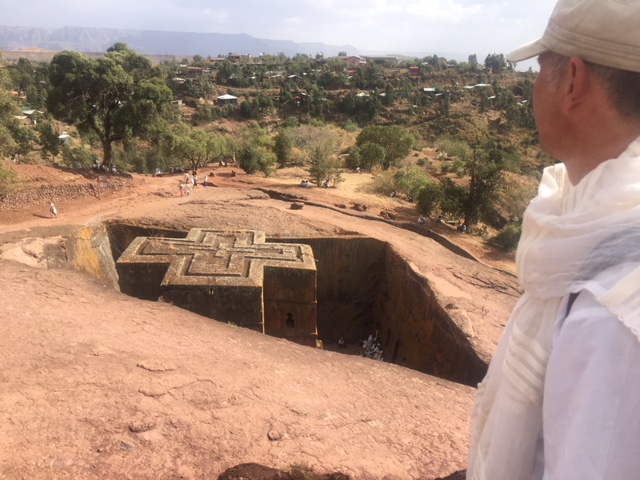
And there was the Star of David at the side of road near Gondar where the Beta Israel community of Jews lived before they were airlifted to Israel in 1979 when Israel first welcomed them, and again in a covert massive airlift in 1991. These were both times of huge and violent transitions in Ethiopia’s political system.

We couldn’t escape the unique aspects of design, beginning with the very script for Amharic, but also in church tapestries, paintings and manuscripts, books of stories, that the Christian priests read aloud for hours during services.
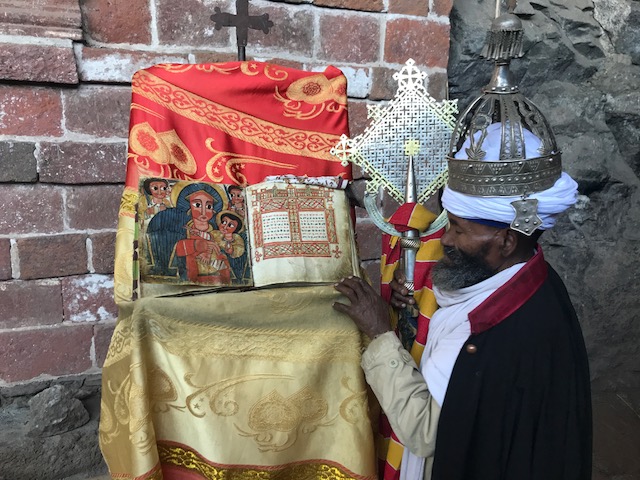

Ethiopian furniture design—especially chairs—intrigued us. Often hewn out of one piece of wood, but here’s a more constructed one in Lalibela airport.
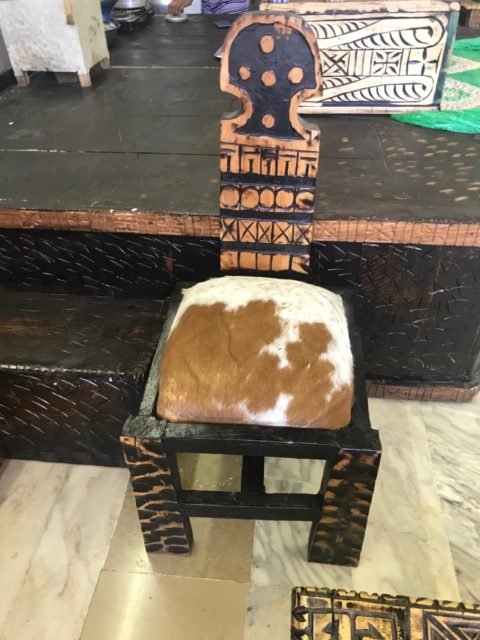
It was difficult to decide where to look at any given time. Every school in Ethiopia has its own uniform colors. How about this one in Bishoftu, a town south of Addis? We love the personalizing of style, however global some pant structures might be.

Stephan is always sniffing out male styles. He coveted the psychedelic green plastic sandals that young men & boys sported everywhere. Called jellies in our world, here’s how we found a pair— in his size !— at the side of the road in Lalibela
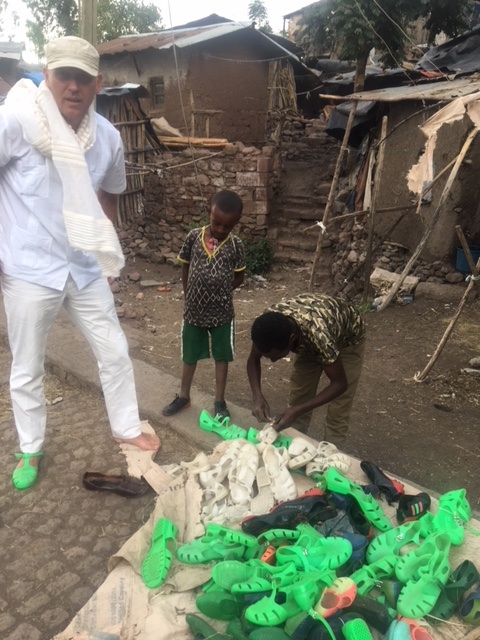
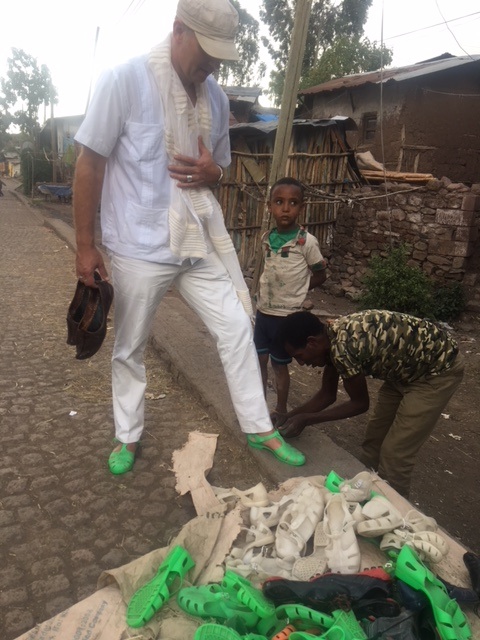
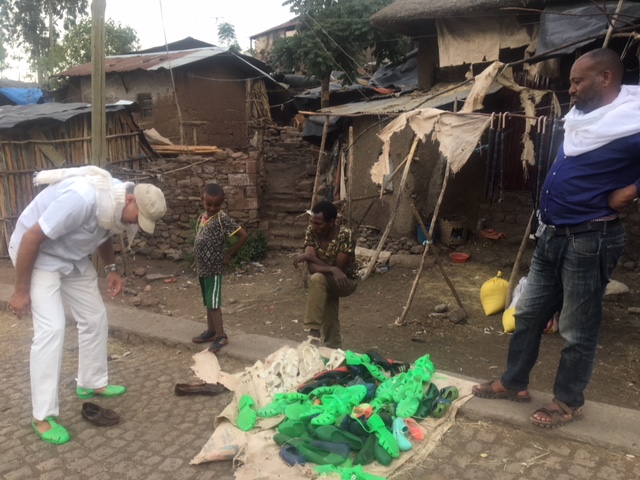
Messi, who was helping his dad sell shoes, is named after the world famous soccer star (FC-Barcelona) and we were to meet other Messis, Ronaldos (Real Madrid) and Suarez’ (FC-Barcelona) on this trek. For soccer-challenged Americans, these are global celebrities whose fandom reaches into the billions, putting American pop stars with their 30 million tweet followers “in the ditch.” This Messi is wearing an amulet around his neck to ward off the evil eye. So his father told us.
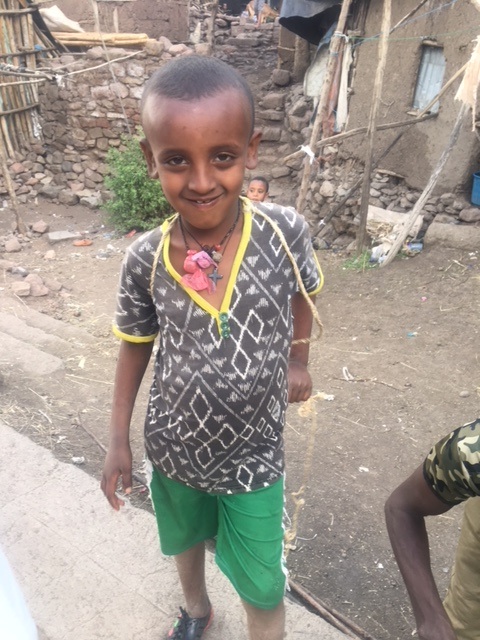
Style is everywhere. The guys who drive the tuktuks often lead the fashion parade.
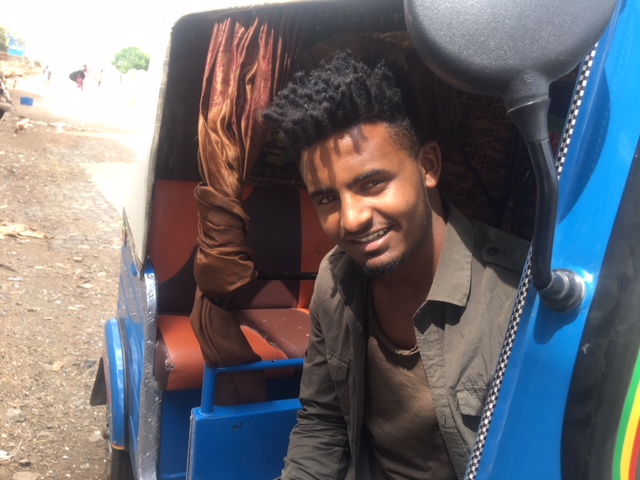

And like everywhere in the world women were working hard…while being stylish.
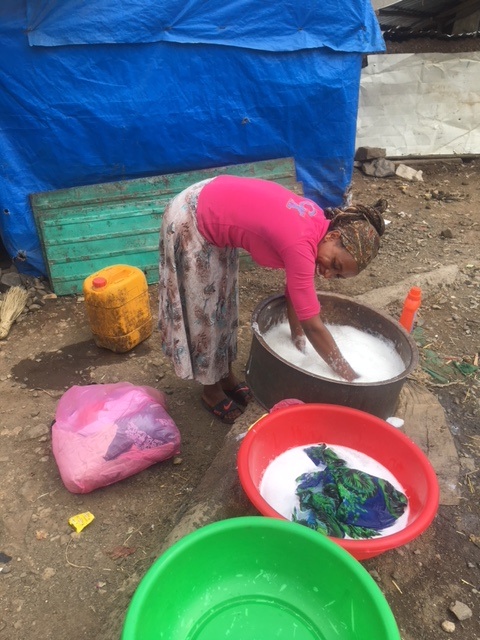
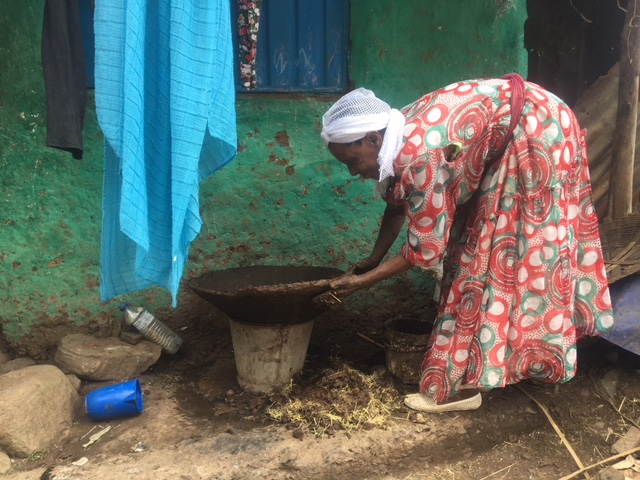
Fashion expression can be surprising. We often stopped to talk to families in front of their houses. If you look carefully at the little girl on the right, she has lovely buttons sewn into her dress for decoration, a style we saw in many places.

Then, after buying a pair of goat skin slip-on sandals at a local market Stephan discovered how magnificently they blended with a little carpet in our hotel room!
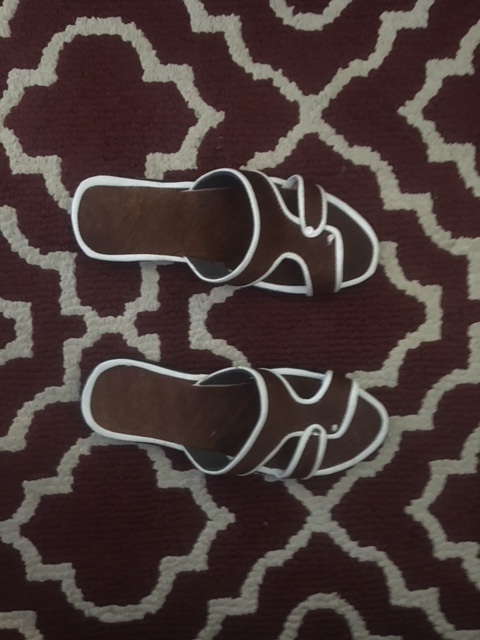
A major reason for going to Ethiopia was to see our ancestor, Lucy. We found her in a basement of a dreary and underfunded museum with burned out light bulbs in Addis Ababa. A replica of her skeleton. It’s a big moment to consider the origins of our DNA.
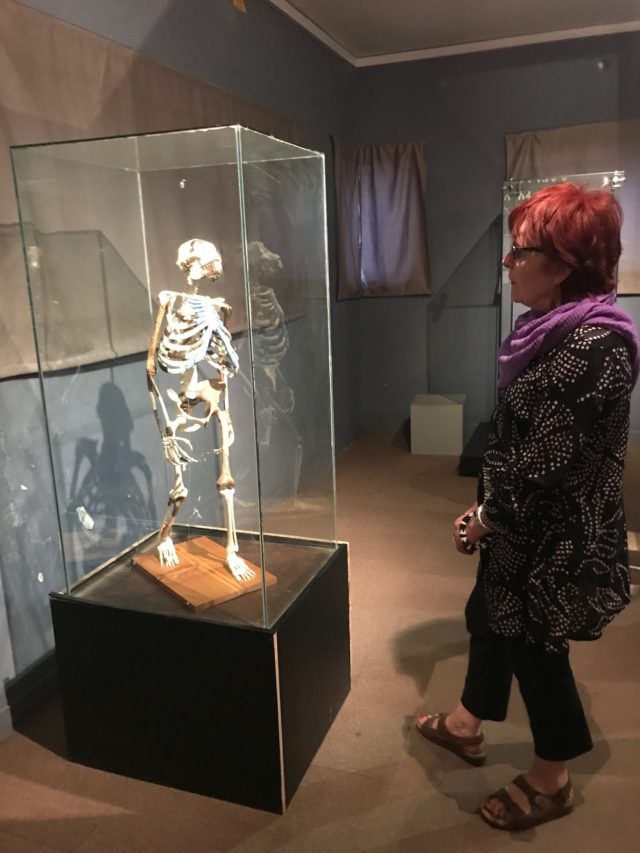
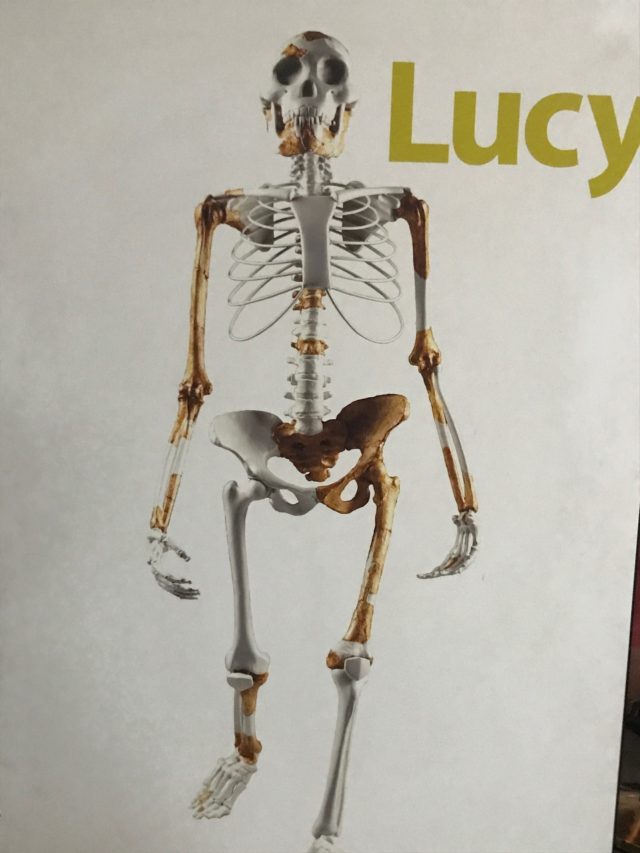
Well, if we had gone to Ethiopia partly to avoid the obligatory animal safaris elsewhere in Eastern Africa, we couldn’t avoid the birds. Here is a rare glimpse of an Abyssinian Hornbill at the side of the road on our way to the airport in Lalibela…followed by Stephan’s impressive bird list.
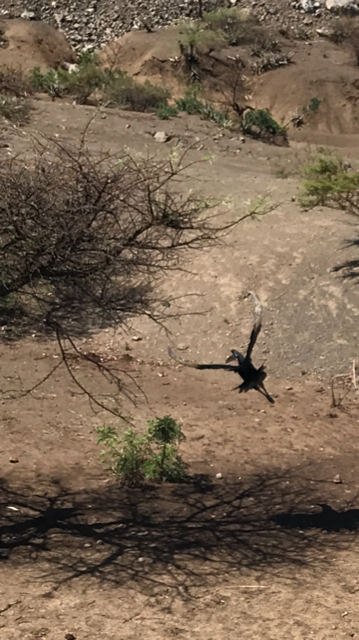
Bird sightings;
African white winged dove & African Red eyed dove (Gondar)
Glossy starling (Gondar); Hooded vulture (Gondar)
Pied crow (Gondar); Yellow billed stork (Addis)
Cliff chat (Gondar); Speckled pigeon (Gondar Hotel)
While collard pigeon (Gondar); Whattled ibis (endemic Gondar castle)
Lammergeier (Gondar); Speckled mousebird (Gondar)
Fire finch (Gondar); Red cheeked Cordon Bleu (Gondar)
Scarlet sunbird (Gondar); Black winged love bird (Lalibela)
Yellow billed kite (Gondar historic pool)
Paradise flycatcher (Lalibela); Olive thrush (Gondar historic pool)
Doubletoothed barbet (Gondar); Scarlet chested sunbird (Gondar)
African Dusky flycatcher; Mosque swallow (Gondar)
Robin chat (Gondar); Ogre buzzard (Gondar)
White collard pigeon (endemic)
Cinnamon chested bee eater (Lalibela)
Fiscal bird (Gondar); Village indigo (Gondar)
Ground scraper thrush (Gondar)
Abyssinian Hornbill (Lalibela airport road)
Birds of another feather enjoying each other!
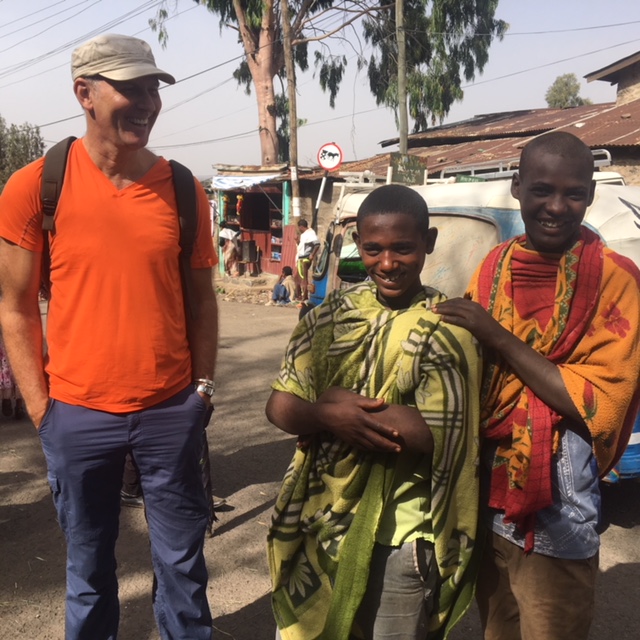
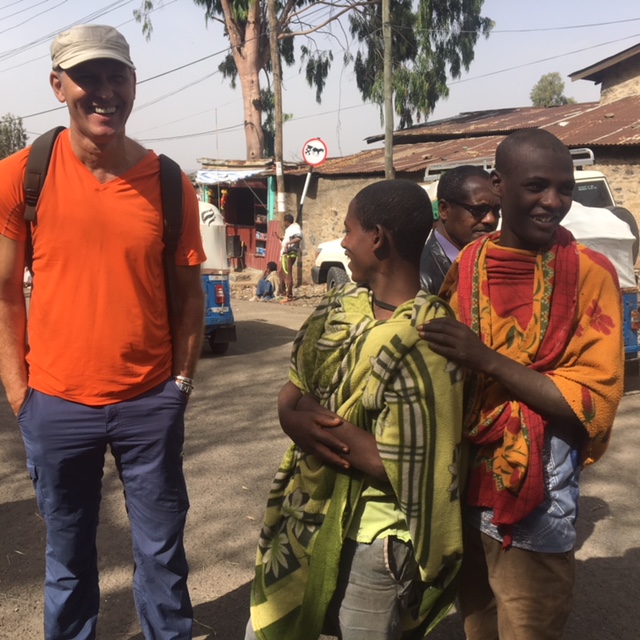
Music list:
Madingo Afework
Tsegaye Eshetu
Mahmoud Ahmed
Alemayehu Eshete
Mulatu Astatke, orignator of Ethio-jazz
And finally, we leave Western feminists something to consider. Sylvia Pankhurst‘s gravestone outside Trinity Church in Addis Ababa.
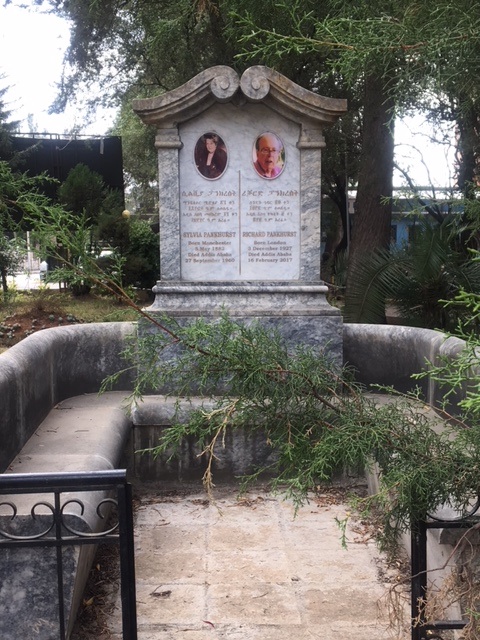
See video of devotees at Gyorgis Church, perhaps the most famous of the rockhewnchurches in Lalibela here.
See video of praying style here.
© Gail Pellett & Stephan Van Dam
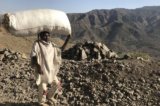
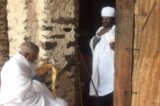
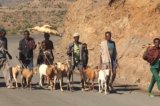

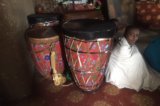
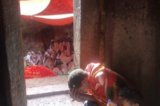
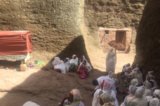
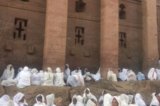
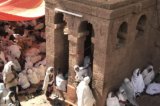
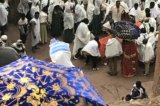
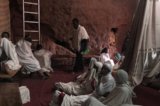
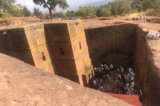

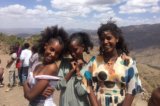
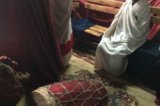
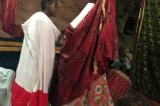
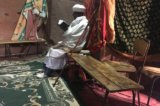
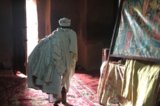
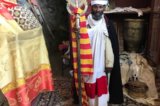
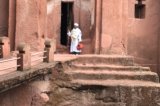
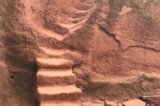
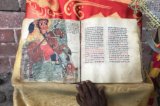

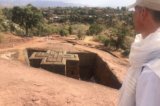
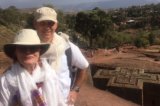
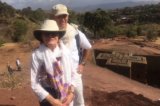
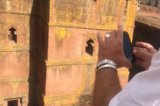
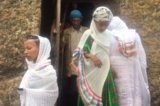
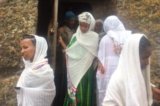
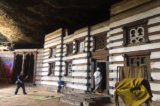
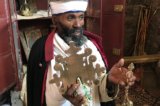
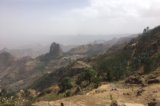


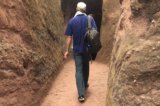
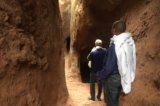
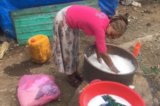

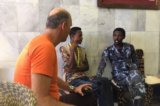
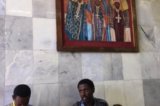



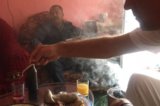



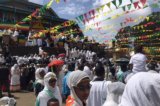

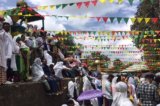
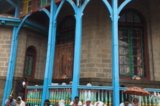
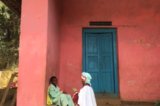
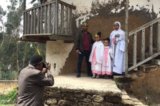
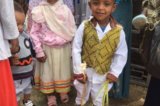
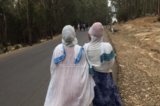
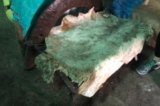
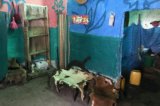
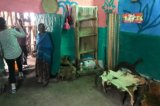


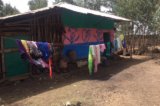
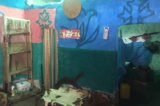

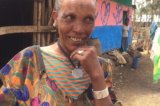
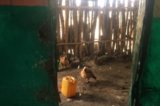
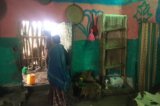
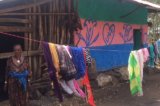

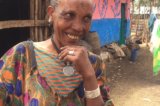

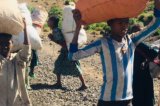
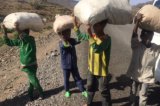
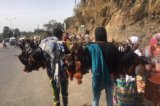
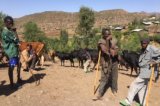
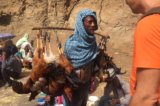
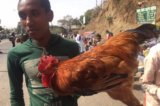

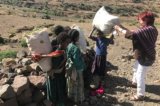

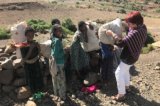

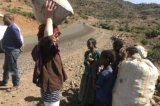
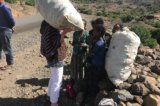

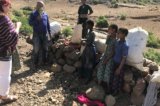
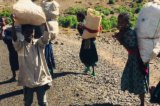
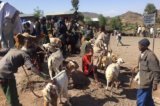
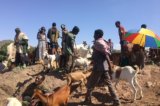

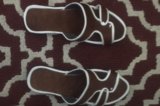

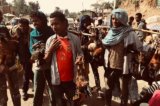
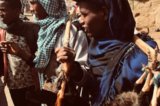
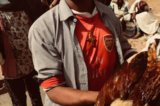


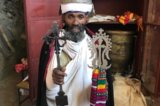

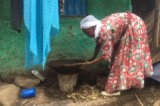

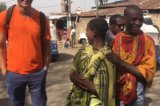


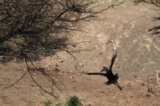





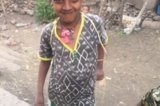



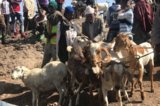
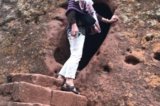
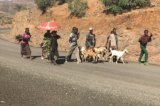
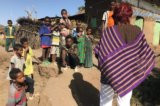
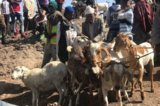
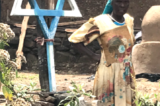

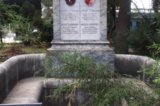
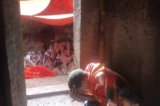

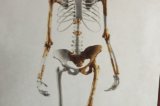

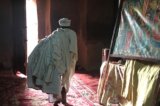
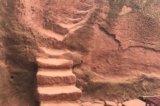

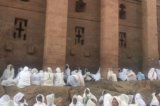
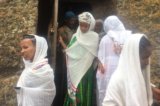

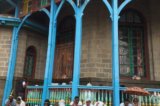
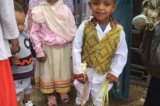
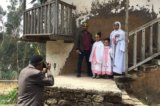
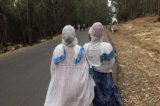
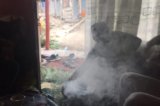
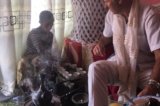
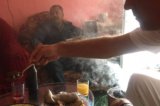


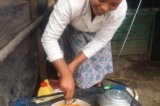


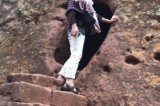
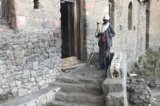
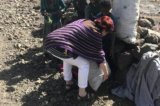

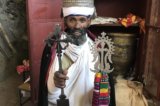
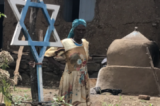
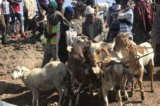
I get an ache in my heart when I see the uncluttered beauty of a society like this. Envy is not really the word, but something has truly been lost when it becomes clear how many wrong turns we have taken in our Western society. Thanks for sharing and taking us with you. Insightful narrative and photos. See you soonest. Bob
oh Gail this is beautiful…We will look at it again and play the music..Not many bars eh (smiles)… They seem to be almost mystical to me and the grown men look like Haile Selassie… Cannot wait to see the shoulder dancing and the shoes!!!! No alcohol whatsoever in that country?? Great blog Sending our affection to both… Your minds must still be singing….Hugs
Magnificent! Thank you both! If only I weren’t 85 I’d try to follow every footstep you took.
alixox
Oh Gail! I’m in tears over this fascinating and beautiful creation. I think it’s perfect lesson in how to travel. Thank you….
How great! What a terrific job. A taste of the journey in text and photos!!
jmoon@csuchico.edu
Great photos. Really enjoyed them. I was a PCV there in Jimma in late 60’s.
Beautiful photos. Stephan looks almost Ethiopian in some of them…Abrazos, cesar
Fantastic! You get better and better with each reported trip. Love.
Compelling photos, tug at the eye and at the heart. ¡Enhorabuena!
Gail, I just love the idea of a blog of mostly pictures! Your great pictures are worth gadzillions of words. Thanks so much for sharing with us!
Marvelous photos and insights! it is indeed encouraging to see that the culture I witnessed back in 1974 seems to have survived in all its colorful and mysterious beauty. I refer, of course, to the green jellies!!!! (Just joking).
This makes me want to return and revisit all those incredible places and their people. bravo for having the guts to go even when the politics were insecure.
Gail – thanks for taking me on your wonderful trip. We all scream about plastic waste & its impact on our planet, but it sure makes life easier for so many people in the world. Much love to you and the Bird Man.
gail & stephan, how magnificent–what a journey. thank you for the gift of narrative and gorgeous pictures. how we get insulated in our little worlds and how glorious it is to have a glimpse of another. thank you for opening our eyes to what lies beyond!
This is fabulous. I broke the rules and immediately watched it on my phone and plan to do it again on the computer. I feel as though I was there. I so much enjoyed the pictures of the girls and women. They were individuals and not exoticized. And the little girls laughing as your u lifted the bales was just delightful. Was it heavy? This is a perfect travelogue, Thanks for sending it to me.
Thank you! You took me there, and I want to go again and walk their land. The photos are stunning. Your insight, respect, delight and curiosity noting their grace – humanity.
Extraordinary essay! Thanks so much for sharing!
Terrific report. Great pix! what a trip. “Fat, gorged tourists”, I think not. Love, C and K
Hola Gaelle y Stefano que maravilloso viaje en verdad es como vivir en otro mundo !!! Ya nos platicaran mas detalles.
What beautiful photos! What a journey! Thanks much for this. xxx Sue
Indeed a mind-opening photo essay, taking me back to my year in Namibia. Just wish I could see some of the pictures of the many birds you saw. As we in our small Austrian world wonder where all the birds are this year, I hope the birds you saw were plentiful.
How wonderful to vicariously enjoy the cultural, religious and aesthetic complexity of this place and it’s peoples through your images and text. Can’t wait to catch up on all the details in person very soon!
The photos were fantastic and the text very illuminating. Lots of stuff I didn’t know. (Sylvia Pankhurst! I had no idea she had anything to do with Ethiopia – which just shows how little I know about her.)
Wonderful pix and commentary. Empathy and humilty in travel writing— this gives all of us an example.
You have done a journey which I have always wanted to do. The pictures are exactally what I would have expected. How fortunate you are. What beautiful people. The few Ethiopians I have known were very gentle and kind and your pictures show them that way. Thank you for sharing that wonderful, magical place with us.
Thank you for sharing that wonderful, magical country with us. It has always been my dream to visit there and meet those gentle and kind people. Aybe some day….
Thank you, thank you for sharing the absolutely magnificent photos and the equally magnificent commentary! It was like taking a wonderful mini course on their culture. I am so looking forward to seeing you both and hearing more first-hand! Thanks again, and thanks, too, for the kind thoughts.
Hi Gail,
Really enjoyed your pictures and story of your trip to Ethiopia. So informative and full of life. You have a real eye for superb pictures! Especially loved the girls laughing as you lifted up the bundle of branches. Stephan will also look very stylish in his green jellies! All the pictures of the people brought Ethiopia to life! Well done and thanks for sharing.
so generous of you to share this glorious journey with you friends…
waiting for your return to us in oaxaca.
I just caught your bird’s eye view of a glorious corner of the universe. 2 fabulous seekers in action. Blessings